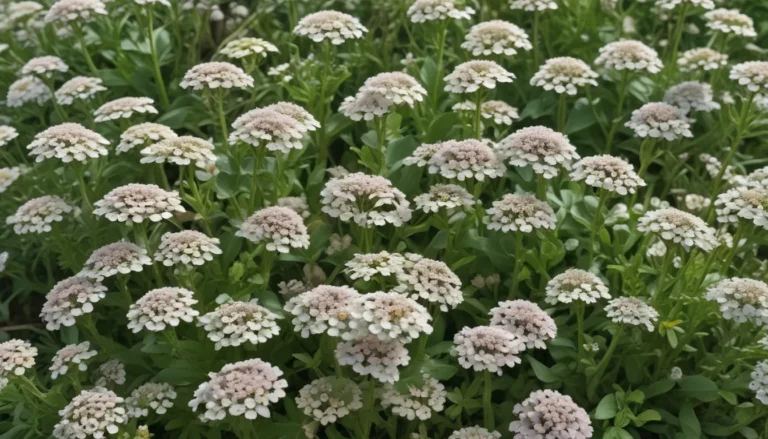A Comprehensive Guide to Using Coconut Coir Products in Your Garden

Are you looking to amp up your gardening game with some eco-friendly and versatile products? Look no further than coconut coir! This natural material is derived from the fibrous husk and pithy dust of coconuts, and it has a wide range of uses in gardening. While most of us may not see this part of the coconut in our grocery stores, it is readily available as a soilless growing medium perfect for gardening projects.
Exploring the World of Coconut Coir
Coir, pronounced as “coy-er,” is a popular gardening material coming from countries like India and Sri Lanka, where coconut palms grow abundantly. The material is processed to create a variety of products that can be beneficial for your garden. Let’s dive into the world of coconut coir and learn about the different products available, how they are made, and the pros and cons of using them in your gardening endeavors.
A Coco Industry – An Array of Options
Coconut fibers have been used for centuries to produce articles like baskets, mats, and ropes. Today, the smaller fibers and pithy dust that were once discarded are utilized to make horticultural products such as loose peat, seed starter discs, compressed bricks, mulch chips, planter liners, molded pots, and climbing poles. These products, known as “coco peat,” “coco chips,” and “coco poles,” vary in quality based on processing methods and storage conditions before reaching the market.
The manufacturing process involves extracting long fibers from coconut husks through a process called “retting,” where the remaining fibers and pith are collected and decomposed to create products like coco peat, discs, bricks, mulch, and more. Reputable manufacturers treat these products to prevent weeds, pests, and diseases and may add nutrients like copper and iron to enhance their quality.
An Array of Options
Garden centers offer a wide range of coconut coir products, including:
- Coco Peat: A soilless growing medium that supports root growth and can be used for seed starting and hydroponic gardening.
- Seed Starter Discs: Compact discs made of coco peat for starting seeds indoors or outdoors.
- Compressed Bricks: Hard bricks of small fibers and dust that expand when soaked, providing a peat-like mixture for potting.
- Mulch Chips: Coarse-textured chips for moisture retention, weed control, and root support.
- Planter Liners: Fibrous liners for containers of various sizes to enhance drainage and aeration.
- Molded Pots: Biodegradable pots made of pressed fibers for starting plants.
- Climbing Poles: Twine-wrapped poles for supporting climbing plants in containers.
Exploring the Benefits and Drawbacks of Coconut Coir
Now that you know more about the wide array of coconut coir products available, let’s explore the upsides and downsides of using this material in your garden.
The Upside of Coir
- Renewable Resource: Coconut coir is a renewable resource that doesn’t take centuries to form compared to peat.
- Enhanced Aeration and Drainage: Coir improves aeration, drainage, and water retention in soil.
- Neutral pH: With a nearly neutral pH level, coir is suitable for a wide range of plants.
- Biodegradable and Weed-Free: Coir contains lignin that inhibits rotting and is free of weed seeds, pests, and diseases.
- Versatility: Coir can be used in various gardening projects and supports healthy plant growth.
The Downside of Coir
- Quality Variability: Inferior coir products may contain weeds, pests, and disease due to improper processing.
- Nutrient Deficiency: Coir lacks essential nutrients, requiring additional fertilization for plant growth.
- Cost: High-quality coir products may be more expensive than alternatives like peat or vermiculite.
- Residue Concerns: Treated coir products may contain chemical residues that could impact plant health.
- Hydration Requirements: Compressed coir products need to be hydrated before use, adding an extra step to gardening.
Making Informed Choices and Drawing Conclusions
As with any gardening material, it’s essential to choose high-quality coconut coir products from reputable sources to ensure optimal results in your garden. Consider factors like product quality, nutrient content, cost, and environmental impact when incorporating coconut coir into your gardening routine. Experiment with different coir products to see how they benefit your plants and projects, and don’t forget to provide the necessary nutrients for healthy plant growth.
Embrace the versatility of coconut coir in your garden by using it for projects like container gardening, seed starting, mulching, and more. By understanding the potential uses and limitations of coir, you can make informed decisions to enhance your gardening experience.
Embracing Sustainable Gardening Practices
Coconut coir is just one eco-friendly option for gardeners looking to adopt sustainable practices in their gardening routines. From cover cropping to using native trees and shrubs in your landscape, there are many ways to minimize your environmental impact while maximizing the beauty and productivity of your garden. Explore the world of coconut coir and other sustainable gardening practices to create a thriving and environmentally conscious garden.
What are your thoughts on using coconut coir in your garden? Share your experiences and ideas in the comments below and join the conversation on sustainable gardening practices. Together, we can cultivate beautiful and eco-friendly gardens that benefit both our plants and our planet.





